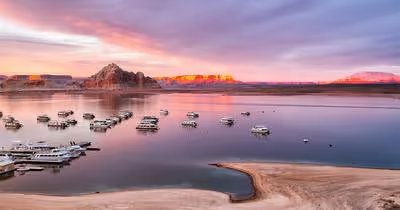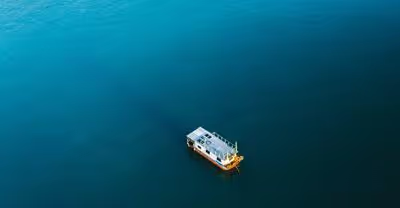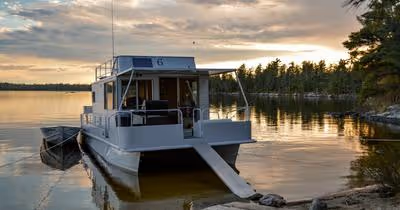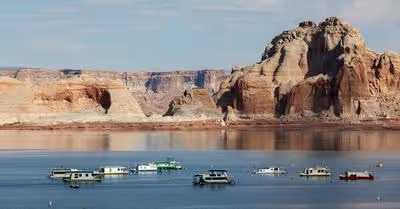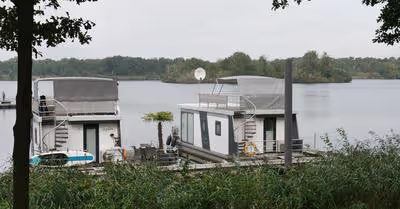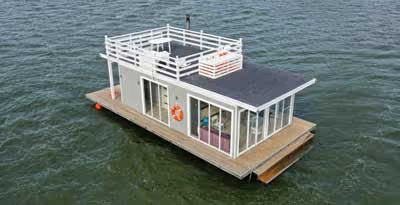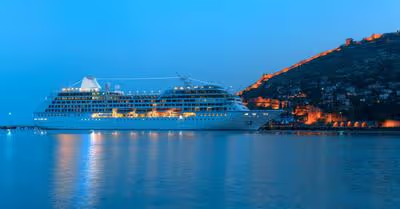
Key Takeaways
- The Titanic was the biggest cruise ship of its time.
- Modern cruise ships surpass the Titanic in size.
- The Icon of the Seas is currently the world’s largest cruise ship.
- Size isn't the only factor in ship design; safety and amenities also matter.
- Technological advancements have allowed for the construction of even larger ships.
The legacy of the Titanic remains one of the most enduring and poignant stories in maritime history. But is there a boat bigger than the Titanic?
Yes, there is a boat bigger than the Titanic. The Royal Caribbean's Icon of the Seas surpasses the Titanic and revolutionizes maritime gigantism as the largest ship in the world. It vastly exceeds the Titanic in size, measuring over five times larger in gross tonnage.
As a seasoned maritime enthusiast, I’ve gained unique insights into the evolution of shipbuilding and the construction of larger vessels. I’m well-versed in the history of iconic ships like the Titanic and the subsequent advancements in maritime technology that have led to the development of larger and more sophisticated vessels. Rest assured, my information is rooted in accurate data and a genuine passion for maritime developments.
Is There a Boat Bigger Than the Titanic?
When I explore the historical context of ocean liners, the RMS Titanic often assumes a central role. Built as the pinnacle of maritime engineering of its time, the Titanic wasn't just any ocean liner; it was a symbol of industrial might and luxurious travel.
But is there a boat that’s bigger than the Titanic?
Yes, there are indeed boats larger than the Titanic. Modern cruise ships and giants of Royal Caribbean International dwarf the main Titanic ship in size and capacity.
While the Titanic extended approximately 882 feet in length, today’s marine giants, like the Icon of the Seas, surpass 1,180 feet. However, the scale and grandeur of the ill-fated Titanic continue to captivate the imagination of many.
The Icon of the Seas, the first of its kind, sets a new benchmark for cruise ships with its astonishing scale. Deemed the biggest cruise ship ever built, this vessel boasts a mind-boggling gross tonnage and a capacity to host thousands of guests that's just as impressive.
Now, let’s explore various features and specs of modern ships and how they compare to the Titanic.
Passenger Experience and Amenities
On the Titanic, first-class passengers enjoyed luxurious cabins and exclusive access to grand dining halls. However, the ship's offerings, though opulent for the era, were limited compared to today's standards.
On the contrary, a new cruise ship provides such a diverse range of services and activities that sailing on one makes for an entire vacation experience. Imagine an array of restaurants, theaters showing Broadway-style performances, and spas offering a sanctuary of relaxation—all at sea.
Every person aboard is a guest entitled to an all-encompassing holiday, irrespective of their cabin class, which is a significant departure from the distinct class system observed on the Titanic.
Some of their onboard amenities are:
- Swimming Pools and water Parks
- Spa and fitness Centers
- Gourmet Dining Options
- Entertainment Venues
- Wi-Fi and connectivity
Technical Specifications and Innovations
The cruise industry has outdone itself by constructing the breathtaking Icon of the Seas. This phenomenal masterpiece surpasses the Titanic in size, technological advancements, and luxurious accommodations.
This modern leviathan is a symbol of how far we've come in shipbuilding. Over time, I’ve closely followed the construction of ships like Icon of the Seas, making me appreciate the might and innovative spirit that propels the creation of these modern titans.
Their technical specs are not just numbers; they represent a new era of maritime prowess that has transformed the seas into avenues of luxury and technological marvels.
Comparative Size and Capacity
When considering the Titans of the Sea, I often marvel at the monumental scale of these vessels. Today, we're tackling the gripping topic of maritime giants, and specifically, we’ll compare the legendary RMS Titanic and modern leviathans of the sea.
Here's is a fleet comparison of these two boats:
Safety and Sustainability
When I explore the giants of the sea, safety, and sustainability are as crucial to me as the sheer size of these impressive vessels. From the tragic tale of the Titanic, we've learned the importance of safety protocols and technological advancements.
Ships like the Icon of the Seas aren't just massive; they embrace sustainability practices and technological advancements, ensuring their voyages respect our planet's ecological balance while keeping passengers safe.
With upgraded propulsion systems, these modern vessels set a new standard for both environmental stewardship and safety measures.
Future Innovations in Ship Design
In the realm of ship design, innovations have come a long way since the era of the Titanic. While the Titanic represented a remarkable feat of engineering for its time, modern ship design has evolved significantly to enhance safety, efficiency, and sustainability.
One notable innovation is the incorporation of advanced materials and construction techniques. Unlike the Titanic's predominantly steel construction, contemporary ships often utilize high-strength, lightweight materials such as aluminum and composite materials.
These materials not only reduce a ship's weight but also improve fuel efficiency and resistance to corrosion.
Another groundbreaking advancement is in propulsion systems. The Titanic relied on coal-fired steam engines, while today's ships commonly use highly efficient, eco-friendly propulsion methods like diesel-electric, LNG (liquefied natural gas), and even battery-electric systems. These innovations reduce emissions and enhance overall ship performance.
Safety has also seen significant improvements. Following the tragic sinking of the Titanic, rigorous safety regulations and technologies were developed.
These include advanced navigation systems, radar, sonar, and the Global Maritime Distress and Safety System (GMDSS). They ensure faster response times and improved communication during emergencies.
Furthermore, modern ship designs prioritize sustainability. Eco-friendly features like exhaust gas cleaning systems (scrubbers), ballast water treatment systems, and even the integration of renewable energy sources like solar panels are becoming more common.
These initiatives aim to minimize a ship's environmental impact and comply with international regulations to protect marine ecosystems.
Additionally, digitalization and automation have transformed ship operations. Advanced monitoring and control systems, predictive maintenance, and autonomous technologies enhance vessel efficiency, reduce crew workload, and enhance overall safety.



